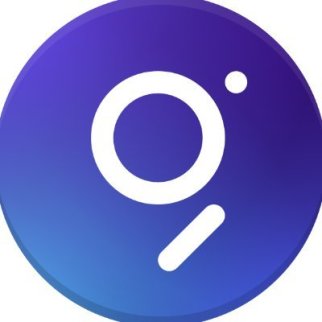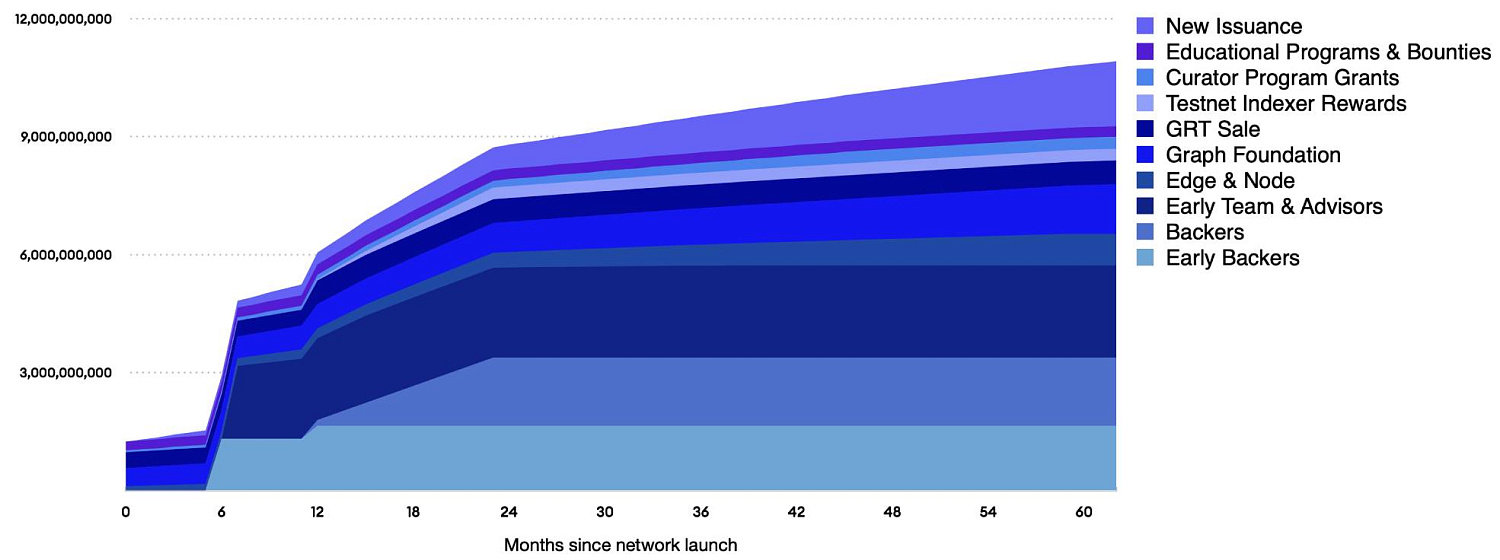The Graph GRT
Report IssueThe Graph (GRT) is an Ethereum token that powers The Graph, a decentralized protocol for indexing and querying data from blockchains. Just like Google indexes the Internet, The Graph indexes blockchain data from networks like Ethereum and Filecoin. This data is grouped into public APIs called subgraphs that anyone can query.
DetailsSentiment Neutral
Fundraising Statistics
$0.08 +1.21%
$0.03
 Coinbase Ventures Tier 1
Coinbase Ventures Tier 1 Fabric Ventures Tier 1
Fabric Ventures Tier 1 Framework Ventures Tier 1
Framework Ventures Tier 1 GRTThe Graph
GRTThe Graph
 USDCUSD Coin
USDCUSD Coin

Short Review The Graph
Crypto project The Graph (GRT) is classified as a Protocol. The Graph is a Utility token that is hosted on the Ethereum Network. The current total supply is 10,000,000,000 (Circulating Supply + Tokens yet to be released - Burned Tokens). The level of social activity of the The Graph project is assessed as High.
The Graph ICO Overview
Public sale of tokens will take place on the Tokensoft Launchpad. Estimated date for the public token sale: 23 October 2020. The Graph (GRT) price during the token sale: 0.03 USD. Min/Max Personal Cap: $1000 / $5000. You can purchase project tokens for ETH
GRT Price Chart
The launch of GRT token trading took place on 17 December 2020.
Fundraising Rounds
Total sold 4.00 B GRT tokens (0.40% of total tokens). Total amount of funds raised by the The Graph project is $279.70 M.
| Investment Round | Date | Price | Funds Raised |
| Funding Round | February 2022 | -- | $205.00 M |
| Strategic Sale | January 22, 2022 | -- | $50.00 M |
| Public Sale | October 2020 | $0.03 | $12.00 M |
| Community Sale | September 2020 | $0.026 | $5.20 M |
| Strategic Round | June 2020 | $0.0029412 | $5.00 M |
| Seed | January 2019 | $0.0014706 | $2.50 M |
The Graph Investors
 Coinbase Ventures Tier 1
Coinbase Ventures Tier 1 Fabric Ventures Tier 1
Fabric Ventures Tier 1 Framework Ventures Tier 1
Framework Ventures Tier 1 Multicoin Capital Tier 1
Multicoin Capital Tier 1 CoinFund Tier 2
CoinFund Tier 2 Digital Currency Group (DCG) Tier 2
Digital Currency Group (DCG) Tier 2 Fenbushi Capital Tier 2
Fenbushi Capital Tier 2 Lemniscap Tier 2
Lemniscap Tier 2 ParaFi Capital Tier 2
ParaFi Capital Tier 2The Graph (GRT) cryptocurrency
The Graph is a decentralized an indexing system designed to query data from blockchains. The platform has its own cryptocurrency - Graph (GRT). Data indexing is a process of structuring data that increases the speed of blockchain operations. Indexed data is grouped into so-called subgraphs - open APIs that anyone can create, implement and accept. This makes the database clear and easily accessible. The Graph indexing feature extends to networks such as Ethereum, IPFS, Filecoin and more are coming soon.
GRT is the main Graph utility token that drives the economics of the network. GRT is an ERC-20 token located on the Ethereum blockchain network that transfers value around the world and distributes resources. The distinctive feature of GRT is that it is locked by indexers, curators and delegators who guarantee indexing and curation services for Graph.
- Indexers receive indexing rewards and query fees;
- Curators receive a portion of subgraph query fees;
- Delegates intervene in indexer rewards and take part of their income.
History of The Graph project
The main developer of The Graph is Yaniv Tal. It launched Graph at the end of 2020 after a three-year testing period. Graph was immediately noticed by DeFi platforms and received several integrations. During this period, Yaniv and his co-founders worked to create a next-level indexing protocol that would simplify access to blockchain data. The Graph team then faced a challenge because it was the first to index blockchains. They had to develop unique software from scratch. Then came GraphQL, a method for collecting, transforming and manipulating data from various sources into an API.
The main goal of Graph is to create an ecosystem that allows access to Web3 without additional servers.
Benefits of The Graph (GRT)
- Data Indexing Graph was designed to index data from various sources. It currently indexes data from Ethereum, IPFS, PoA, etc. Similarly, Graph erases the technical overhead associated with structuring data.
- Subgraphs. Graph enables all users to unlimitedly create open source subgraphs that provide simple and secure access to data storage. Subgraphs eliminate any difficulties associated with indexing data from blockchains, making the use of the Graph very comfortable and convenient.
- Stake. GRT owners can stake their tokens and receive passive income. The remuneration is calculated at 3% annual issue. Stakers transfer part of their GRT to indexers. They, in turn, run nodes that generate rewards that are distributed among the stakers. The reward, of course, is paid in GRT.
Disadvantages of The Graph (GRT)
- Volatility. Like many other cryptocurrencies, GRT is highly volatile, which can be a risk factor for short-term traders. On the other hand, volatility is what makes investing in crypto assets attractive to more and more people and companies.
- Time-consuming. In some cases, users have to wait several days before they can start working with the data. This may happen because the indexing process takes time and can be problematic due to the volume of data.



 ByBit
ByBit  Binance
Binance  Gate
Gate  Score
Score 